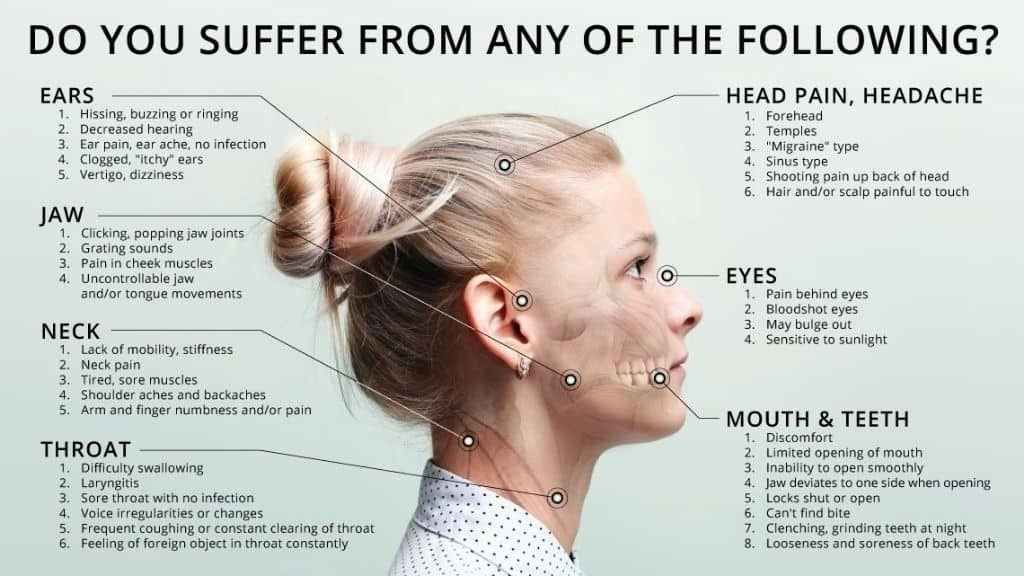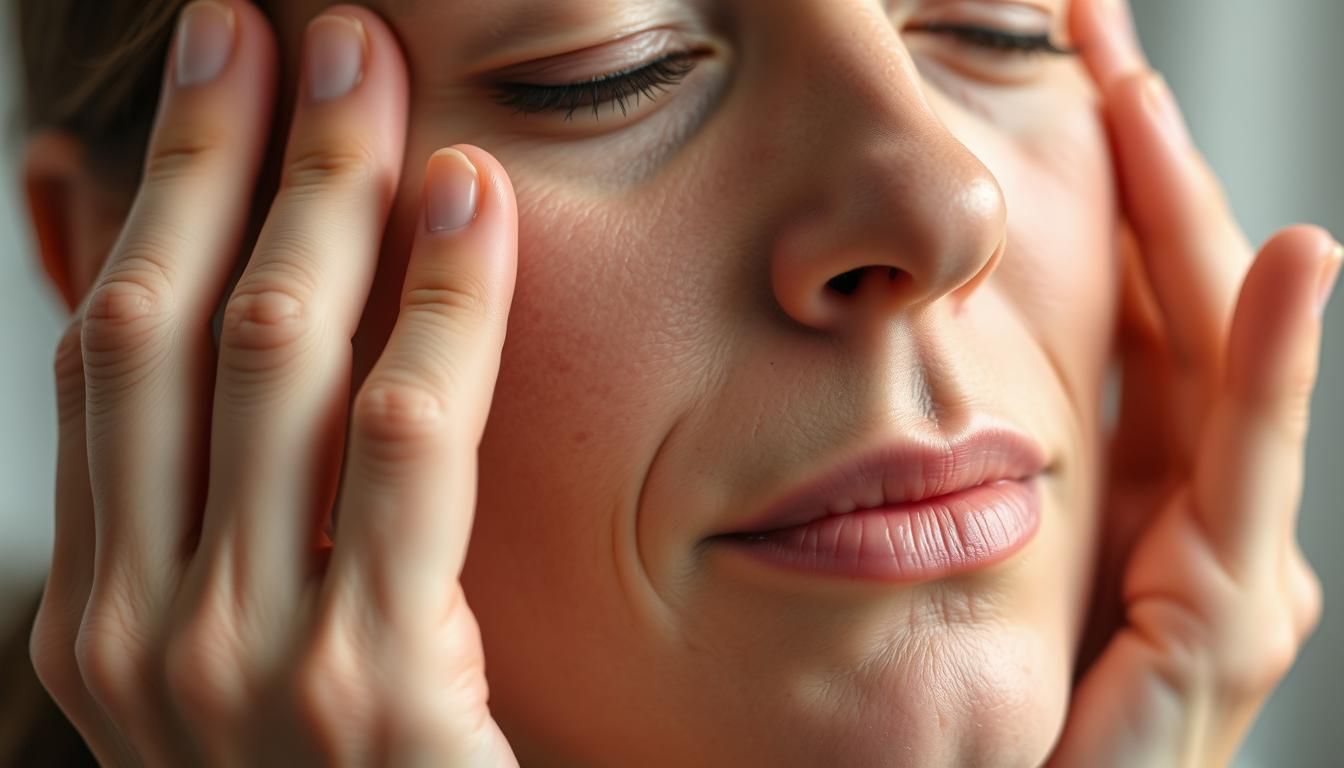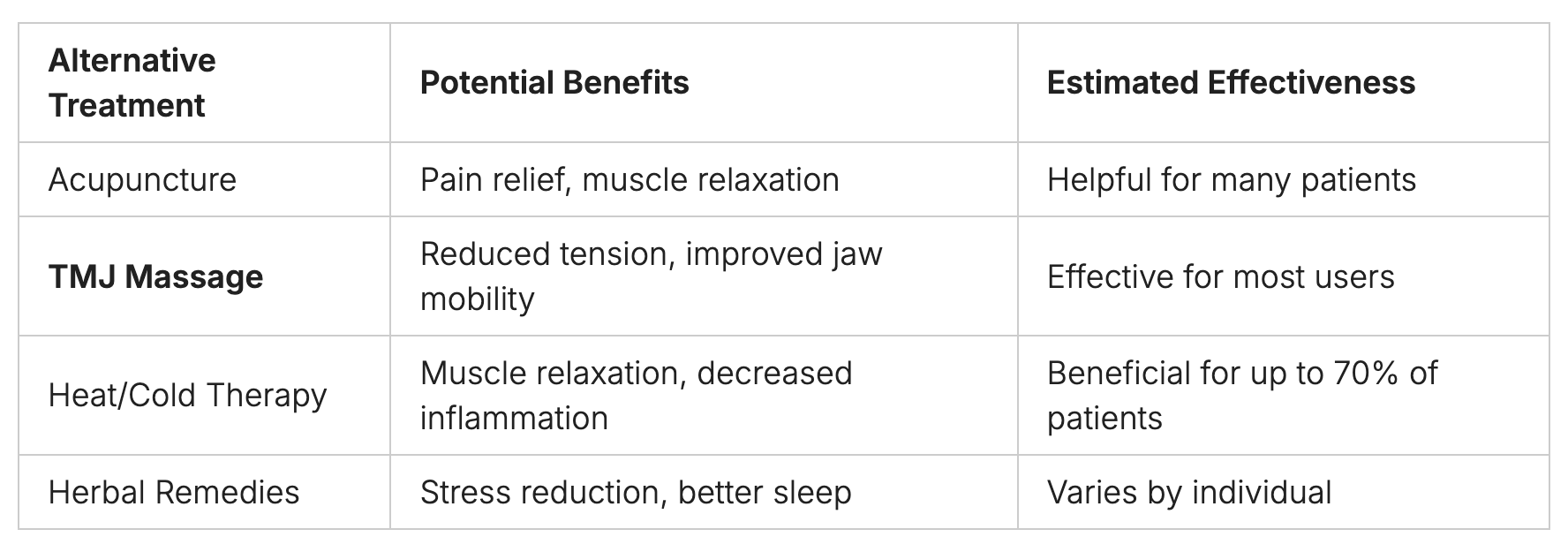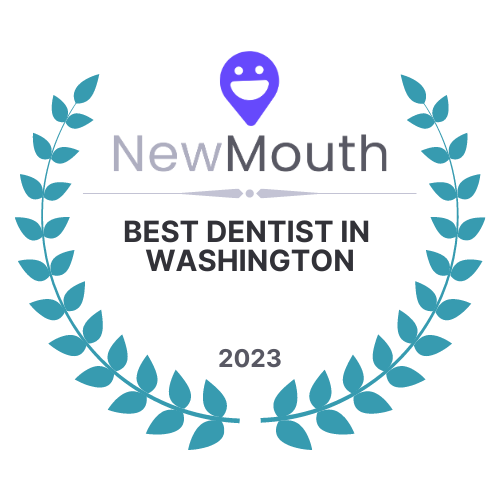New Patients & Dental Emergencies Welcome • We Speak English, Spanish, and Persian • 4444 Connecticut Ave NW, Washington DC, DC 20008 • (202) 363-2810
New Paragraph
Is It Better to Go to a Doctor or Dentist for TMJ?
Is It Better to Go to a Doctor or Dentist for TMJ?
TMJ disorders affect millions in the U.S., causing jaw pain and discomfort. This can really impact daily life. Many wonder if they should see a doctor or dentist for TMJ symptoms.
TMJ disorders can cause jaw pain, stiffness, and trouble chewing. These symptoms affect about 10 million Americans. Women are 2 to 3 times more likely to have TMJ issues than men. Choosing between a doctor or dentist is key for effective treatment.

Interestingly, about 30% of patients first see their primary care doctor for TMJ concerns. But, dentists are usually better at diagnosing and treating TMJ disorders. They have more knowledge of the jaw and mouth. In fact, 70% of dentists use oral appliances as a first treatment for TMJ disorders.
Key Takeaways
- TMJ disorders affect about 10 million Americans, with a higher prevalence in women.
- 75% of individuals with TMJ disorders report pain that interferes with daily activities.
- 30% of patients initially consult a primary care physician for TMJ concerns.
- Dentists often use oral appliances as a primary treatment for TMJ disorders.
- Both doctors and dentists can play important roles in diagnosing and treating TMJ issues.
Understanding TMJ Disorders
TMJ disorders affect the temporomandibular joint, causing pain and discomfort in one or both joints. These conditions impact approximately 10 million Americans, with women experiencing them twice as often as men. It's important to understand TMJ causes and recognize TMJ symptoms for proper diagnosis and treatment.
TMJ disorders can stem from various factors, including injury, teeth grinding (bruxism), improper bite alignment, and arthritis. Bruxism, affecting 20-30% of the population, is a significant contributor to TMJ issues. Stress and genetic predisposition may also play a role in developing these disorders.
Common TMJ symptoms include:
- Jaw pain or tenderness (affecting 75% of patients)
- Difficulty chewing
- Clicking or grating sounds when moving the jaw
- Limited jaw movement or locking (in about 20% of cases)
- Headaches (reported by 50% of patients)
- Neck pain and earaches (experienced by up to 60% of sufferers)
It's important to note that TMJ disorders can coexist with other conditions like fibromyalgia, irritable bowel syndrome, and sleep problems. While many cases resolve without treatment, some become chronic, necessitating professional intervention. Recognizing these symptoms early can lead to more effective management and improved quality of life.

How TMJ Is Diagnosed
Diagnosing TMJ involves a detailed process to find the cause of jaw pain. Dentists use different methods to check the temporomandibular joint's health. These steps help figure out how severe the problem is and suggest TMJ treatment options.
Digital X-Rays and 3-D CBCT Scans
Advanced imaging is key in TMJ diagnosis. Digital X-rays show the jaw's structure in detail. 3-D CBCT scans give a full view of the head and neck, including the spine, jaw joints, and teeth. This is vital for a correct diagnosis.
The K7 Evaluation System tracks jaw function, uses electromyography, and sonography. It helps dentists find issues that might be overlooked. The T-Scan Digital Bite Analyzer also checks bite force and timing, helping spot TMJ problems.
TMJ Arthroscopy
TMJ arthroscopy is sometimes needed for diagnosis. It's a minimally invasive method that lets dentists see the joint directly. They can spot damage and even fix minor issues. It's especially helpful when other tests don't give clear results.
Getting a precise TMJ diagnosis is key for effective treatment. With these advanced tools, dentists can create personalized plans. This helps patients find relief from TMJ-related pain.
Doctors: The Role of Medical Practitioners in TMJ Disorder Treatment
Medical doctors are key in treating TMJ disorders. They are often the first doctors patients see for TMJ relief. These doctors do initial exams, diagnose the issue, and suggest initial treatments.
Doctors look at TMJ disorders from a wide health view. They think about stress and overall health, which can affect TMJ symptoms. A study found people with depression are 2.1 times more likely to have TMJ disorders. Those with anxiety are 1.8 times more likely to have myofascial pain.
Doctors help patients by prescribing TMJ medication. They give out medicines for pain and muscle relaxation. An online TMJ registry showed that most patients use anti-inflammatory agents (73%), nonprescription pain relievers (56%), and antidepressants (50%) for TMJ relief.

When needed, doctors send patients to specialists for more treatment. This team effort makes sure TMJ disorders get full care. It tackles both physical symptoms and health issues.
Dentists: The Role of Dental Professionals in TMJ Disorder Treatment

Dentists have been leading in TMJ disorder treatment since 1936. They are key in diagnosing and treating these complex issues. A TMJ dentist offers treatments that target the causes of jaw pain and dysfunction.
One common treatment is the TMJ mouth guard. It can greatly reduce symptoms, especially for those who grind their teeth at night. Studies show it can cut TMJ pain by up to 80% in those with bruxism-related disorders.
Dental professionals also offer:
- Orthodontic interventions to correct bite issues
- Dental restorations to improve jaw alignment
- Physical therapy exercises to strengthen jaw muscles
- Recommendations for stress reduction techniques
While dentists are crucial, complex TMJ cases often need a team effort. The National Institutes of Health suggests seeing healthcare providers trained in musculoskeletal disorders for full care.
Patients should get multiple opinions before starting any treatment. With over 50 TMJ treatments available, choosing the right one is key. A skilled TMJ dentist will discuss possible side effects and create a treatment plan that fits each patient's needs.
Making the Right Decision: Factors to Consider When Choosing a Provider
Choosing the right TMJ treatment provider is key. With 82% of TMD patients feeling jaw pain or stiffness, finding a specialist is vital. The choice between a doctor and dentist depends on several factors.
Think about your condition's severity. If you wake up with mild pain, a dentist might be a good fit. But for more serious cases, a doctor with TMJ expertise is better.
Look at the provider's experience. Since 72.4% of TMD cases involve muscle pain, find someone with a lot of experience in muscle-related TMJ issues. Choosing the right TMJ doctor means checking their qualifications and treatment style.
Also, consider location and insurance. With over 10 states without an Orofacial Pain Specialist, finding a nearby provider can be tough. Make sure your insurance covers TMJ treatments, as costs vary a lot.

The best provider offers TMJ treatments that fit your needs. Whether you pick a doctor or dentist, make sure they can handle your TMJ issues well.
Treatment Options for TMJ Disorders
TMJ disorders affect about 10 million Americans, with women twice as likely to experience symptoms. The good news is that various treatment options for TMJ disorders exist, ranging from conservative approaches to more invasive procedures.
Medications
Pain relief is often the first step in managing TMJ disorders. Nonsteroidal anti-inflammatory drugs (NSAIDs) can reduce muscle pain and swelling in about 80% of patients. For more severe cases, prescription-strength pain relievers may offer relief to half of the affected individuals.
Therapies
TMJ physical therapy proves effective for many patients. Techniques like ultrasound and TENS help about 60% of people with TMJ pain. TMJ exercises, when combined with other therapies, can significantly improve jaw function and reduce discomfort.

Cognitive behavioral therapy helps approximately 30% of patients manage chronic TMJ pain. For those seeking alternative treatments, acupuncture has shown promise in alleviating pain for about 60% of patients.
Surgical or Other Procedures
When conservative treatments fail, TMJ surgery may be necessary. About 10-15% of patients require surgical intervention. Arthroscopy, a minimally invasive procedure, boasts an 80-90% success rate in symptom relief. While more invasive, open-joint surgery carries a higher complication rate of 10-15%.
Trigger-point injections offer relief to 50-70% of patients with myofascial pain. Low-level laser therapy reduces pain and inflammation in roughly 70% of TMD cases. These options provide alternatives for those seeking non-surgical solutions.
Alternative Medicine
Many people look for alternative ways to ease TMJ pain. These methods can add to traditional treatments and bring more comfort. Let's look at some popular options that might help with TMJ symptoms.
Acupuncture is a natural way to treat TMJ pain. It involves putting thin needles into certain body points. Many people find it helps a lot with TMJ pain.
TMJ massage is also effective. Massaging the jaw muscles gently can help reduce tension and pain. Buccal massage, which focuses on the inside of the cheeks, can also help with TMJ pain and headaches.
Heat and cold therapy are simple but powerful ways to relieve TMJ pain. Heat can relax muscles for 10-15 minutes. Cold packs can help reduce swelling. Many people find this method soothing for TMJ symptoms.
Herbal remedies like chamomile and lavender tea can help relax and ease TMJ tension. Some people use valerian or passionflower supplements to help with TMJ-related sleep issues.

Yoga poses like the lion pose and fish pose can help with TMJ pain. These gentle stretches can improve jaw flexibility and reduce tension. Always talk to a healthcare provider before trying any new treatment for TMJ symptoms.
Can Severe TMJ Be Cured?
TMJ disorders affect millions, with women aged 35-44 being twice as likely to experience symptoms. While mild cases often respond to conservative TMJ treatment, severe cases pose unique challenges. The cure for severe TMJ depends on various factors, including the underlying TMJ causes and the individual's response to treatment.
For many patients, a combination of therapies can significantly reduce symptoms and improve quality of life. These may include:
- Nonsteroidal anti-inflammatory drugs (NSAIDs) for pain relief
- Steroid injections to reduce inflammation
- Platelet-rich plasma (PRP) therapy to promote healing
- Electrotherapy to stimulate endorphin release
- Arthroscopy for accurate diagnosis and treatment
In severe cases where conservative measures fail, surgical interventions may be necessary. These can range from minimally invasive procedures to major surgeries like TMJ replacement. While such treatments can provide significant relief, it's important to note that complete cure isn't always possible.
The key to managing severe TMJ lies in early intervention and a comprehensive treatment approach. By addressing both the symptoms and underlying causes, patients can often achieve substantial improvement in their condition, even if a total cure remains elusive.
Find the Right TMJ Disorder Treatment at DC Implant & Cosmetic Dentistry
DC Implant & Cosmetic Dentistry is your go-to for TMJ disorders. Our TMJ specialists use the latest methods to find and fix jaw problems. TMJ affects 5% to 12% of Americans, causing pain for millions.
We offer many TMJ treatments to fit your needs. From simple fixes to surgery, we aim to ease your pain and improve jaw movement. Our team keeps up with new research to give you the best care.
At DC Implant & Cosmetic Dentistry, we offer:
- Comprehensive TMJ evaluations
- Custom oral appliances
- Physical therapy recommendations
- Medication management
- Surgical consultations for severe cases
Don't let TMJ pain rule your life. Our TMJ specialists can help you find relief and improve your life. Contact DC Implant & Cosmetic Dentistry today at (202) 555-1234 or visit our website to schedule your consultation. Start your journey to a pain-free jaw and a brighter smile.
FAQs
Understanding TMJ disorders can be tough. This section answers common questions to help you understand TMJ symptoms and diagnosis.
Do I tell my doctor or dentist about TMJ?
Telling both your doctor and dentist about TMJ symptoms is key. TMJ disorders are common among people aged 20 to 40. But, they can affect anyone. Your healthcare team can work together to help you.
What is the 3 finger test for TMJ?
The 3 finger test is a simple way to check for TMJ disorders. Place three fingers vertically in your mouth. If you can't open wide enough, it might be a sign of TMJ issues. But, this test is not definitive. A professional evaluation is needed for a correct TMJ diagnosis.
What could be mistaken for TMJ?
Many conditions can seem like TMJ symptoms. These include sinus problems, ear infections, and dental issues. Poorly-fitted dentures can also cause jaw pain and contribute to TMD. Always see a healthcare professional for a proper diagnosis.
What test confirms TMJ?
No single test can confirm TMJ disorders. Diagnosis usually involves a physical exam, medical history, and imaging tests like X-rays or MRI scans. Your healthcare provider will choose the best tests based on your symptoms.
For expert TMJ care, contact DC Implant & Cosmetic Dentistry at 4444 Connecticut Ave NW, #106 Washington, DC 20008. Call (202) 363-2810 or email smile@dc-dentistry.com.



